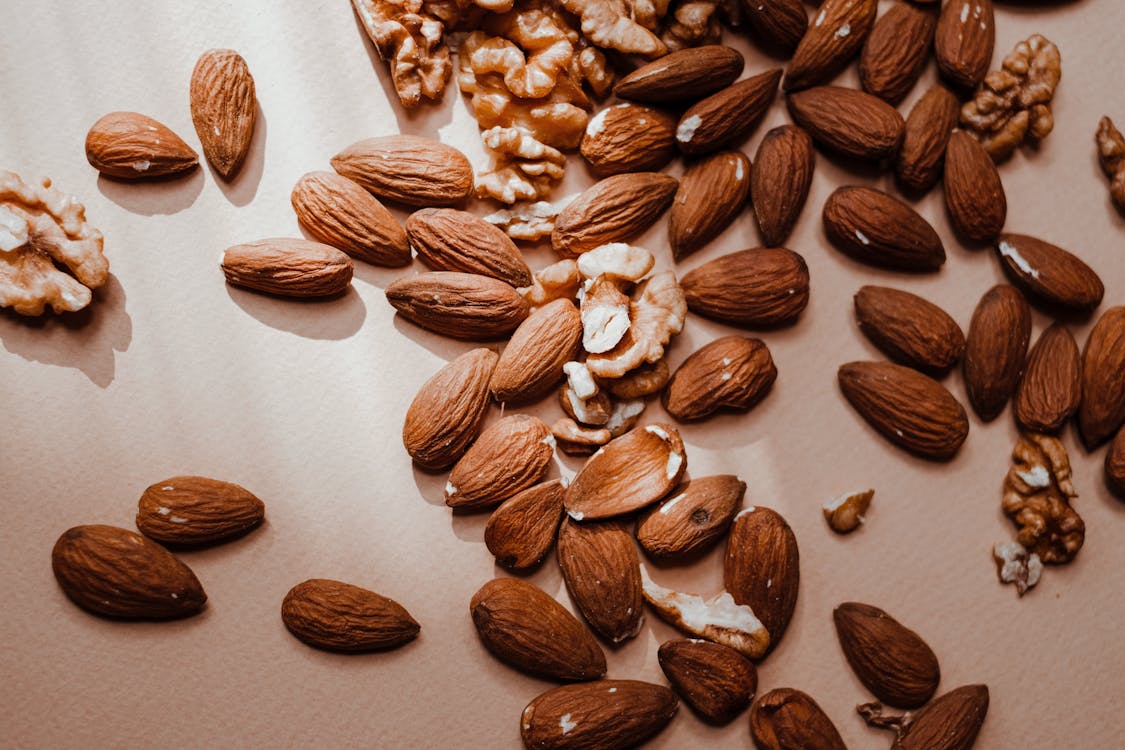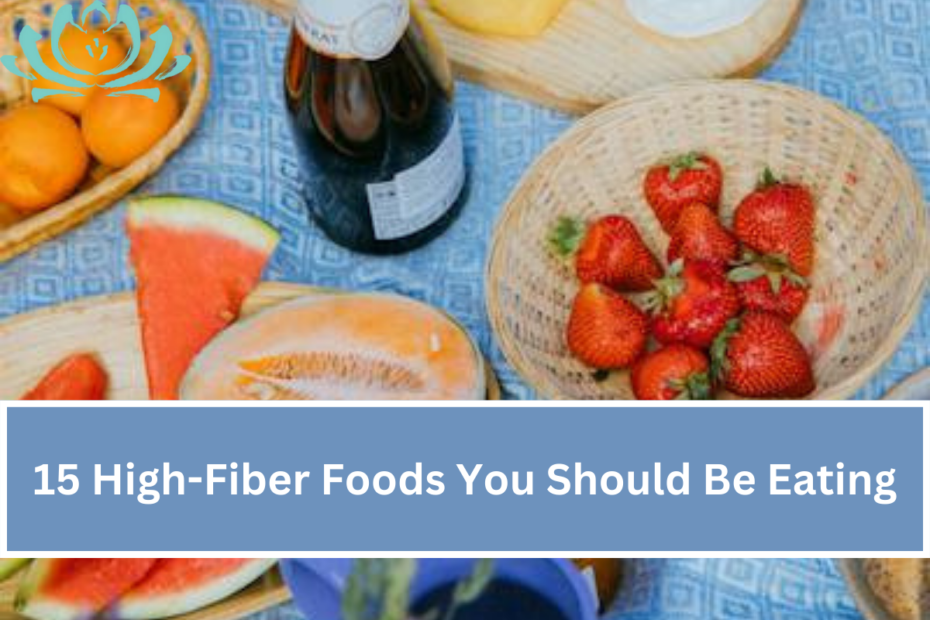15 High-Fiber Foods You Should Be Eating:-You may not think much about fibre until an irregular situation arises. Dietary fibre is a superstar at preventing constipation, but it does more. Fibre lowers cholesterol and reduces the risk of heart disease and colon cancer. This helps you lose weight by preventing blood sugar spikes and keeping you satisfied longer. “Fiber does lots of cool stuff in the body,” explains RD, LD Anna Taylor. Find it here and learn why certain foods are great for high-fiber diets.
15 High-Fiber Foods You Should Be Eating
Foods That Are High In Fiber
Avoid hunting for fibre in chicken dinner—it comes from plants. However, the plant kingdom has much to offer, and the best dietary fibre sources may surprise you.
recommends 25–35 g of fibre daily. She recommends 22 items to eat now, along with delightful dishes and snacks.
Lentils
- Legumes are fiber-rich. “Lentils are nutritional powerhouses,” “They’re low in fat, high in protein and fiber.”
- Coloured edible seeds have different flavours and are healthful. Many cuisines use them.
- One cup boiled has 18 g of fibre.
- Lentils cook rapidly and go well in soups and salads. Replace some of the meat in your chilli for plant-powered goodness, or add curried tomatoes for a simple, savoury vegetarian meal.
Split peas
- Legumes attack again! “Split peas are a low-calorie, fat-free food high in B vitamins and key minerals and soluble fiber,” Complex carbohydrates provide energy.
- One cup boiled has 16 g of fibre.
- They take longer to cook than lentils (60 minutes vs. 30 minutes), so boil them ahead of time to speed up supper prep or make a split pea soup and freeze the leftovers.
Black beans
- Black beans are among the most fiber-rich beans. Their protein, potassium, and antioxidant content make them pleasant and healthy.
- Canned (unsalted) fibre: 15 g per cup.
- Consumption method: Black beans provide depth to meatless chilli and taste great over baked potatoes. Bake them into brownies!
Pinto beans
- Whole or mashed, these famous beans are versatile and healthful. They’re high in fibre, protein, and essential vitamins and minerals and low in carbs.
- One cup boiled has 15 g of fibre.
- Use them in chilli or fat-free refried beans in tacos and burritos. They add fibre to charred corn and onion salsa.
Artichoke hearts
- Despite their earthy taste, these underrated veggies are nutritious. They contain fibre, vitamin K, folate, and liver-healthy nutrients.
- Cooked 1 cup = 14 g fibre.
- Serve artichokes on pizza, pasta, or salads like this veggie, bean, and artichoke salad. If you like gooey spinach and artichoke dip, try this lighter version.
Kidney beans
- Half a cup of robust kidney beans contains protein, magnesium, and fibre.
- Worried about petrol? Eating beans more often is the solution.
- “After three to four weeks of regular intake, the gut adapts and flatulence levels return to baseline.”
- One cup cooked has 12 g of fibre.
- Vegetarian red bean chilli employs kidney beans as a basis and adds heartiness to buffalo chicken chilli.
Chickpeas
- Fiber-rich chickpeas are a legume favourite.
- “They’re some of the best sources of protein and fibre, they help keep you full, and they have amazing nutrient composition.”
- One cup cooked has 12 g of fibre.
- For eating, use hummus. Chickpeas are also fantastic in salads and sides, and you can season and bake or air-fry them till crispy for a snack.
Also Read:-12 Effective Tips To Lose Belly Fat (Backed By Science)

15 High-Fiber Foods You Should Be Eating
Chia seeds
- Fiber-rich chickpeas are a legume favourite.
- “They’re some of the best sources of protein and fibre, they help keep you full, and they have amazing nutrient composition.”
- One cup cooked has 12 g of fibre.
- For eating, use hummus. Chickpeas are also fantastic in salads and sides, and you can season and bake or air-fry them till crispy for a snack.
Raspberries
- All berries are healthy, but raspberries are among the highest in fibre and sweet.
- Raspberries include antioxidants and poly phenols that reduce oxidative stress and disease risk.
- One cup has 8 g of fibre.
- How to eat them: Frozen berries are cheaper when out of season.
- Thawed berries can be blended into a smoothie or added to warm muesli to avoid their mushy texture.
- Raspberry cheesecake bars are delicious and low-fat.
Blackberries
- Blackberries are nature’s dessert—juicy and sweet.
- Like raspberries, these little fellows are full of antioxidants that battle oxidative stress and keep you healthy.
- They lower inflammation and improve blood sugar.
- 1 cup equals 7.5 g fibre
- Consumption method: Whole, fresh berries are delicious as snacks, but there are various ways to eat them.
- Making a basic sauce. “You can cook them down and use them instead of syrup on waffles or pancakes,”
Whole-wheat pasta
- Whole grains are high in fibre, despite their reputation. They also contain phytonutrients, which may prevent disease.
- Advises avoiding white pasta, which has been devoid of nutrients, and choosing whole wheat.
- Fibre content: 7 g per cup cooked.
- How to eat them: Chances are you already like pasta, but try whole-wheat spaghetti primavera, which is full of healthful veggies.
Barley
- “Barley is a delicious grain that’s often overlooked,” Chewy and nutty, it’s a nutritious whole grain packed of vitamins and minerals.
- This full food can help you avoid overeating.
- 1 cooked cup = 6 g fibre.
- Eating instructions: Barley soups like robust kale and parmesan and chicken mushroom barley soup may be made into grain bowls with your favourite meat and veggies. This risotto is satisfying and healthful.
Pears
- These early winter fruits are fiber-rich. Believes pears include more soluble fibre than most fruits, which slows digestion and decreases cholesterol.
- One medium pear has 6 g of fibre.
- Eat them immediately and enjoy! Poached pomegranate pears and kumquats make an attractive, healthful dessert.
Almonds
- These nuts contain beneficial unsaturated fat, which may lower heart disease risk.
- They’re a wonderful on-the-go snack with a lot of fibre and 6 grams of protein per serving.
- Fibre: 23 almonds = 6 g.
- Eat almonds as a snack, but watch your portion amounts.
- Their crispness enhances watermelon salad with cucumber, tomato and almonds and sautéed Swiss chard with slivered almonds.
Oats
- Oats, a staple of a healthy breakfast, contain both insoluble and soluble fibre.beta-glucan, a soluble fibre, may help manage blood sugar by decreasing glucose absorption.
- Beta-glucan lowers total and LDL cholesterol. A half cup of rolled or steel-cut oats contains additional vitamins and minerals.
- 1 cooked cup = 5 g fibre.
- Eat it: Avoid sugary instant oatmeal. Instead, microwave two-minute oatmeal or create overnight oats with fruit and other healthful ingredients.
If you like this article about 15 High-Fiber Foods You Should Be Eating Please share this article with your friends and family members.

